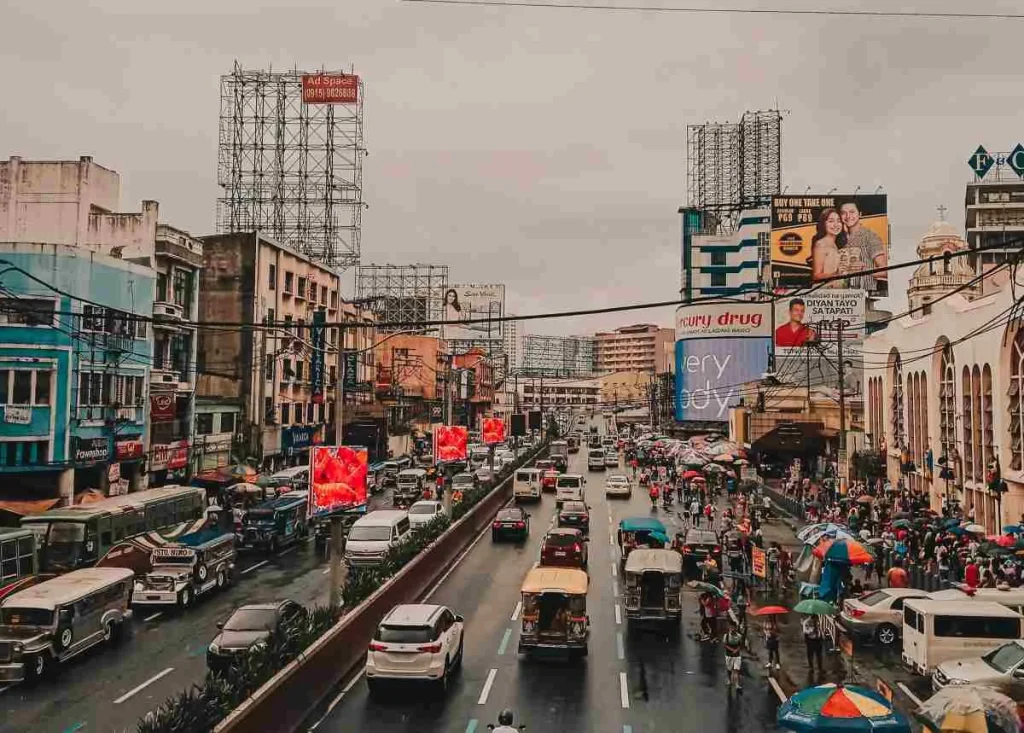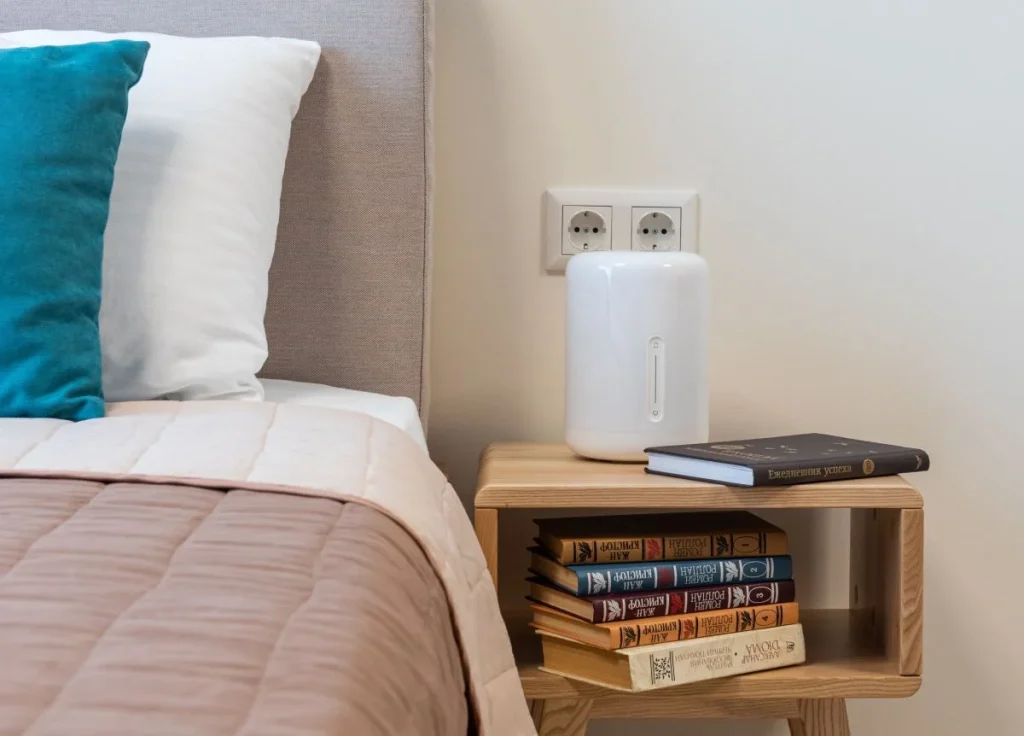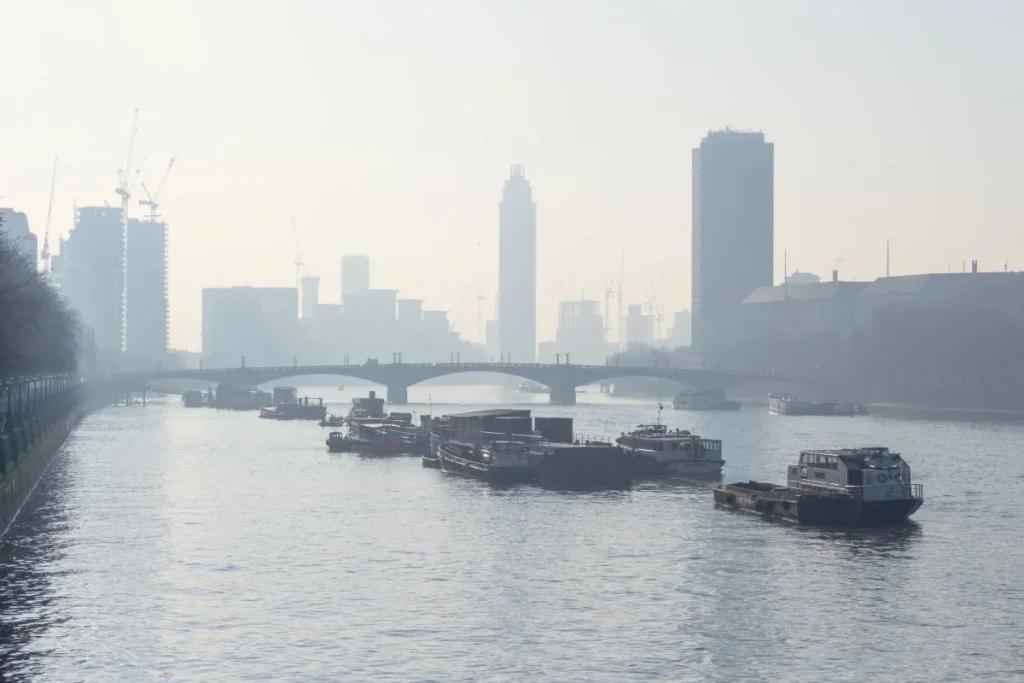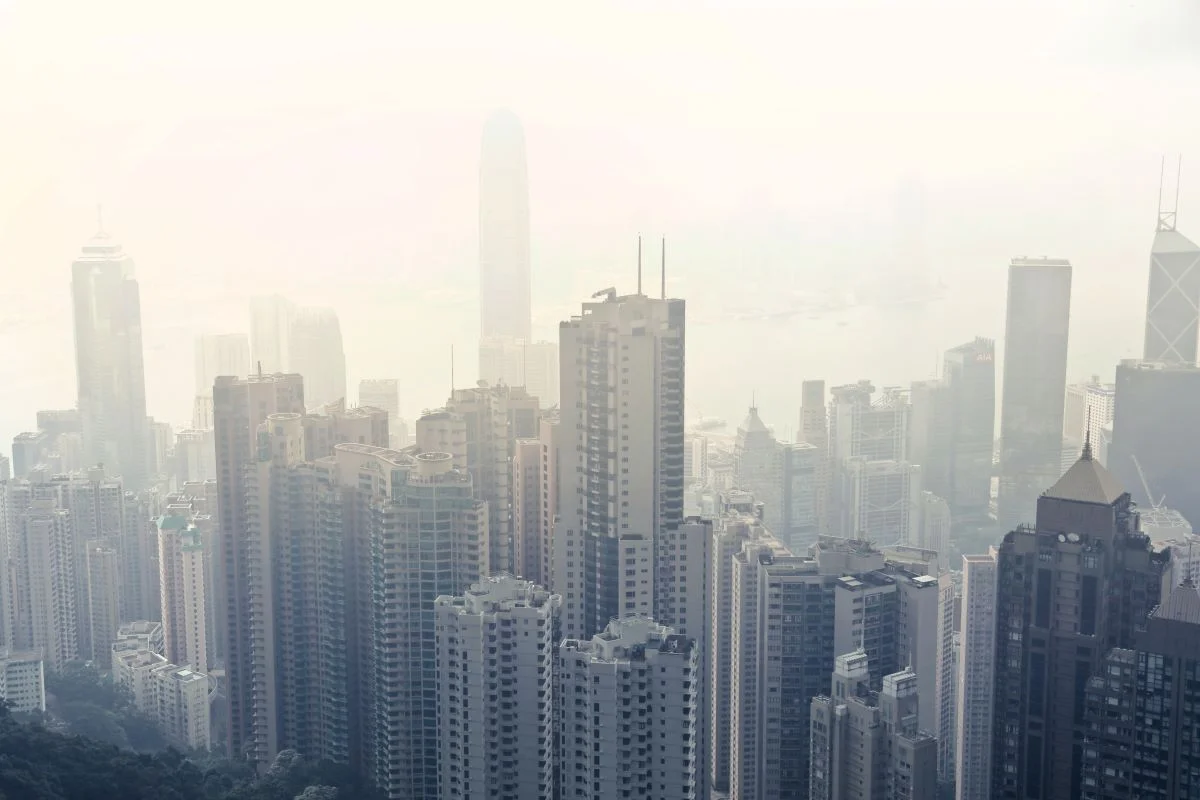In Metro Manila, the throbbing center of the Philippines, millions of people live, work, and prosper. However, the city is not immune to environmental difficulties; one persistent problem is the haze that can engulf the area and drastically lower air quality. Pollution, forest fires, bad weather, and other causes frequently contribute to the haze. It’s critical to take preventative action in order to maintain your health and well-being during these times of bad air quality. If you’re in need of some fresh air, have a look at the lot for sale in Cavite, a province south of Metro Manila that is renowned for its calmer and cleaner surroundings.
Haze in Metro Manila
Haze is a persistent environmental problem in Metro Manila, Philippines, that degrades the area’s air quality and may be harmful to the resident’s health and quality of life. A visible and frequently widespread suspension of fine particulate matter, aerosols, and other pollutants in the atmosphere that reduces visibility and has poor air quality is referred to as haze.
Due to its location, Metro Manila may occasionally be affected by haze from surrounding wildfires or heavily industrialized areas. The concentration of pollutants in the city may be influenced by its closeness to coastal regions and its relatively low height.
Forest fires can also cause haze in Metro Manila, particularly in the dry season. Forest fires, whether they are local or from nearby areas or nations, generate a lot of smoke and particulate matter into the air, which can be transported to Metro Manila by wind currents and affect the air quality. Temperature inversions and stagnant air masses are examples of weather factors that can trap pollutants closer to the ground, aggravating haze and air quality problems. Pollutants cannot spread into the higher atmosphere due to these circumstances.
In Metro Manila, the effects of haze are broad and have an impact on many facets of daily life, including health, the environment, and the economy. Haze can cause respiratory issues, eye irritation, and an aggravation of pre-existing diseases including allergies and asthma. Long-term health effects from haze exposure can occur.
Improve Air Quality in Manila

The public is informed of any changes in air quality by the government via websites, apps, and other channels on a regular basis. During times of low air quality, this knowledge aids locals in making judgments about outdoor activities. The Clean Air Act and more stringent automobile emissions rules are two initiatives that try to lower city pollution levels. To improve air quality, these restrictions must be enforced.
Residents are encouraged by educational efforts and awareness initiatives to take personal steps to lessen air pollution, such as carpooling, using public transportation, and cutting back on emissions from commercial and industrial sources. When haze levels are dangerous, emergency steps are taken to minimize traffic and emissions, such as closing schools and implementing the Unified Vehicular Volume Reduction Program (UVVRP), also known as the number coding scheme.
While tackling the haze problem in Metro Manila is difficult due to the complex interaction of elements, government, communities, and individuals must work together to improve air quality and reduce the haze’s negative effects on the area’s health and environment. In order to lower pollution levels in the metropolitan area, long-term options can include switching to cleaner energy sources, enhancing public transportation, and encouraging sustainable urban development.
Strategies to Stay Healthy While the Metro Manila Smog Is Present

Remain Informed
Knowledge is power, It’s important to keep up with changes in Metro Manila’s air quality. Observe reliable websites or applications that offer up-to-the-minute information on the state of the air, such as the Department of Environment and Natural Resources (DENR). You may arrange your outside activities properly and take the essential safety measures when the air quality deteriorates by staying informed.
On social media sites like Twitter and Facebook, follow news outlets and journalists. Avoid completely depending on social media for news since false information can spread quickly on these platforms. When information originates from social media or less reliable sources, be careful to verify it before accepting it as true.
Keep in mind that the secret to being informed is to strike a balance between the amount of information you consume and your time constraints and mental health. It’s crucial to keep informed, but it’s just as crucial to avoid being overloaded by the never-ending flow of information.
Put on a Mask
Haze can irritate the eyes, nose and throat. Masks can lessen exposure to irritants, making being outside in foggy conditions more comfortable. One of the simplest and most efficient ways to prevent yourself from breathing in hazardous particulate matter during the haze is to wear a mask. Select masks that can effectively filter out fine particles and pollutants, such as N95 or FFP2 masks, which have a high filtering effectiveness. To enhance the mask’s effectiveness, make sure it is securely fastened to your face.
A variety of health difficulties, including respiratory disorders (including asthma, chronic lung or heart condition and bronchitis), cardiovascular troubles, and the escalation of pre-existing illnesses, can be brought on by prolonged exposure to haze. By limiting inhalation of dangerous particles, wearing a mask can help lower the risk of certain health issues. Children, the elderly, and people with pre-existing respiratory or cardiovascular diseases are among those who are particularly vulnerable to the negative effects of haze. For these vulnerable groups, mask use is extremely crucial to maintaining their health.
Even when the air quality is bad, wearing a mask might help people to carry on with their normal activities like traveling to work or school. This is especially crucial in regions that frequently experience haze episodes.

Limit Outdoors for Several Hours
Reduce outside activities, to reduce exposure, when the haze appears and the air quality deteriorates. Avoid outdoor sports, exercise, and any other activities that require extended exposure to contaminated air. Choose indoor activities as an alternative to reduce your exposure to airborne pollution.
Close all windows and doors to keep the outside air from entering your home. If you have children or other vulnerable people in your home, schedule or relocate outdoor activities.
Use an Air Purifier
Fine particulate matter (PM2.5 and PM10), which is frequently present in haze, can be efficiently captured by air purifiers fitted with HEPA (High-Efficiency Particulate Air) filters. These tiny particles, which are linked to a number of health problems, including respiratory disorders and cardiovascular ailments, can get deep into the respiratory system. As external pollutants enter your home through haze, the quality of the air inside might be drastically reduced. By continuously filtering out contaminants, air purifiers assist maintain a healthy indoor environment while giving you cleaner, safer air to breathe.
Continuous operation of air purifiers throughout the haze event ensures a constant level of air quality improvement. This is especially crucial because changing weather conditions can have an impact on outdoor air quality.
While air purifiers can considerably improve interior air quality during haze, they work best when combined with other preventative measures like minimizing outdoor activity and wearing masks as needed.
Maintain Clean Indoor Air quality/ Stay Hydrated
Staying hydrated is crucial when the air is polluted. You can maintain overall health and assist your body remove pollutants by drinking enough water. Choose clean, filtered water to prevent your system from becoming contaminated further.

- In addition to using air purifiers, make sure your home is well-ventilated to maintain healthy indoor air quality. When the quality of the outside air improves, open your windows and doors to let fresh air inside your house. Avoid smoking indoors to prevent further air quality degradation.
- When cooking, use exhaust fans and keep the windows open to get rid of aromas and stop indoor pollutants from accumulating. To prevent the accumulation of dust, allergies, and pollutants, frequently clean, vacuum, and mop floors, carpets, and surfaces.
- In areas where scents are a concern, like adjacent to garbage cans or in closets, use natural odor absorbers like baking soda or activated charcoal.
- Reduce the emission of indoor contaminants by using low-VOC (volatile organic compound) paints, cleaning supplies, and building materials.
- Use of scented candles, air fresheners, and aerosol sprays should be handled with caution since they might release VOCs and allergens into the air.
- Reduce clutter since it can obstruct airflow and collect dust. Living rooms with less furnishings are simpler to keep clean and ventilated.
Maintaining Good Hand Hygiene
It’s important to often wash your hands, especially after being outside in the smog. Washing your hands thoroughly with soap and water will help you avoid unintentionally spreading toxins to your face and respiratory system. Airborne pollutants can settle on surfaces and skin.
Consume Food that is High in Antioxidants
Consume meals high in antioxidants to aid your body in fending off the negative effects of air pollution. Berries, leafy greens, and citrus fruits are among the best fruits and vegetables to choose from. Antioxidants can aid in lowering oxidative stress and inflammation brought on by pollution exposure.
Your general health can benefit from adding a range of these antioxidant-rich foods to your diet, which can also shield your body from oxidative harm. To ensure you acquire a variety of antioxidants and other necessary nutrients, keep in mind that a balanced and varied diet is crucial.
Continue to Lead a Healthy Lifestyle
Your best line of defense against the negative health effects of poor air quality is a strong immune system. Make maintaining a healthy lifestyle a priority by getting adequate sleep, eating balanced food, and exercising frequently. Your body’s capacity to resist external stimuli can be improved by adopting these behaviors.

- Embrace a diverse diet that includes whole grains, lean proteins, fruits, veggies, and healthy fats. Limit processed meals, sugary drinks, and too much salt in your diet. To keep your weight at a healthy level, pay attention to portion amounts.
- For increased muscle strength and endurance, incorporate strength training activities. Make fitness a regular part of your day by engaging in activities you find enjoyable.
- Utilize stress-reduction methods such as mindfulness, yoga, meditation, and deep breathing. Find healthy coping mechanisms for stress, such as taking up a hobby or seeing a therapist.
- To maintain optimum hydration throughout the day, consume lots of water. Avoid consuming too much caffeine and sugary beverages.
- Create a soothing evening routine and keep a regular sleep schedule. Make sure your sleeping space is relaxing and distraction-free.
- Make appointments with your healthcare practitioner for routine checkups and screenings. As advised, keep an eye on your cholesterol, blood pressure, and other health indicators.
- Develop a good attitude and support network of friends and family. If you are in an unhealthful or abusive relationship, get help.
- If you choose to consume alcohol, do so sparingly. Observe suggested principles for responsible alcohol consumption. Limit your exposure to secondhand smoke and don’t smoke.
- If you experience signs of anxiety, depression, or other mental health conditions, put your mental health first by getting treatment. Exercise self-care and partake in pursuits that advance mental health. Develop a grateful heart and an optimistic outlook. Concentrate on your abilities and achievements.
Keep in mind that leading a healthy lifestyle requires ongoing dedication. It involves making long-lasting changes to enhance your general quality of life. The secret to long-term success in sustaining a healthy lifestyle is gradual change and persistence. A healthcare professional you consult with can also offer you individualized advice based on your particular health objectives and needs.’
Although the Metro Manila haze may present a sporadic environmental issue, you may lessen its negative effects on your health by being proactive in protecting yourself. Keep yourself informed, avoid going outside when the air quality is bad, use an air purifier, wear a mask, and maintain good hygiene. Focus on leading a healthy lifestyle and eating foods high in antioxidants as well to protect your body from the damaging effects of air pollution. With these precautions in place, you can maintain your health and resilience despite environmental difficulties.
Related Blog: Choosing Relaxation Through Scents: Air Purifiers and Humidifiers


